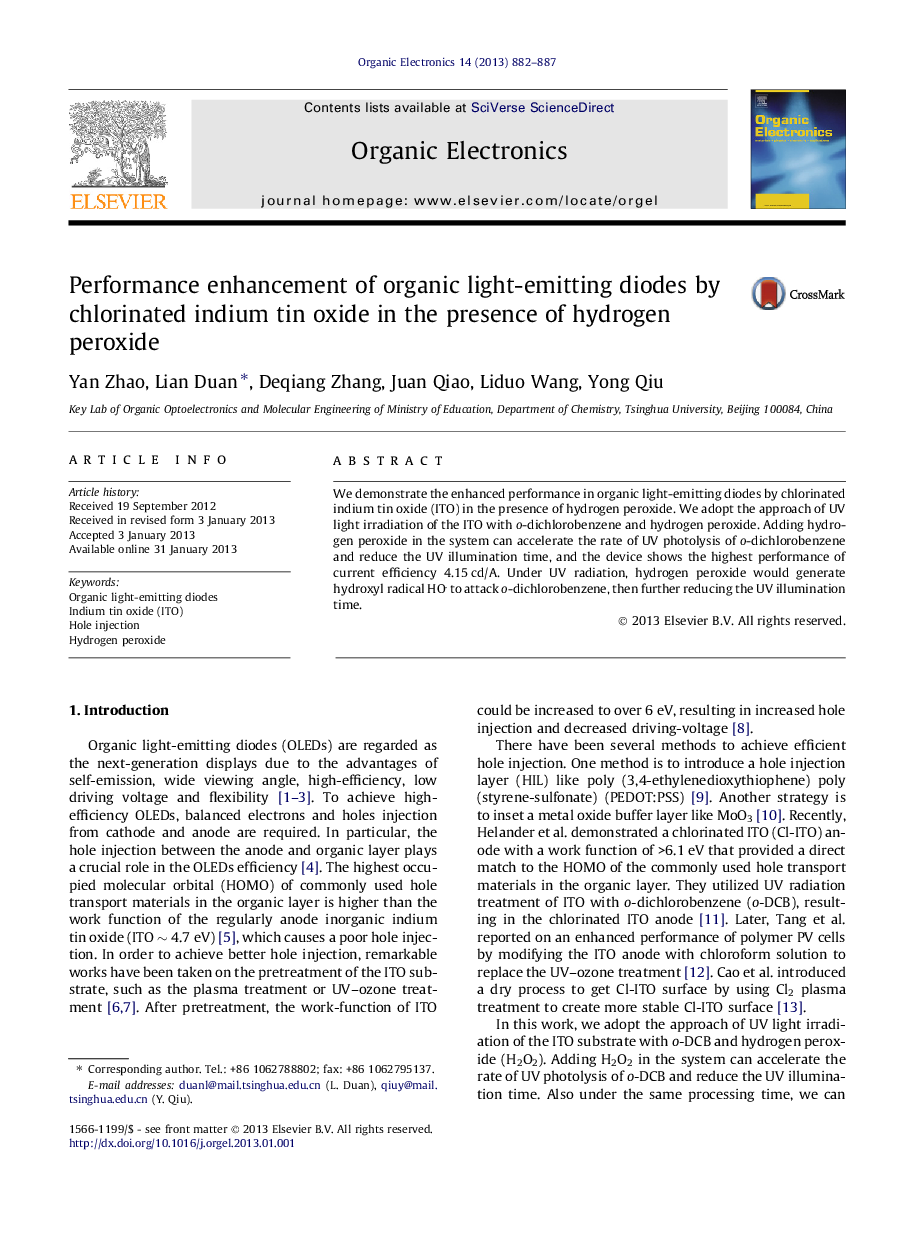| کد مقاله | کد نشریه | سال انتشار | مقاله انگلیسی | نسخه تمام متن |
|---|---|---|---|---|
| 1267428 | 972346 | 2013 | 6 صفحه PDF | دانلود رایگان |

We demonstrate the enhanced performance in organic light-emitting diodes by chlorinated indium tin oxide (ITO) in the presence of hydrogen peroxide. We adopt the approach of UV light irradiation of the ITO with o-dichlorobenzene and hydrogen peroxide. Adding hydrogen peroxide in the system can accelerate the rate of UV photolysis of o-dichlorobenzene and reduce the UV illumination time, and the device shows the highest performance of current efficiency 4.15 cd/A. Under UV radiation, hydrogen peroxide would generate hydroxyl radical HO. to attack o-dichlorobenzene, then further reducing the UV illumination time.
Figure optionsDownload as PowerPoint slideHighlights
► UV light irradiation of the ITO with o-dichlorobenzene and hydrogen peroxide would improve the work function of ITO.
► Adding hydrogen peroxide in the system can accelerate the rate of UV photolysis of o-dichlorobenzene.
► XPS data prove the mechanism that adding H2O2 into the system can significantly reduce the UV illumination time.
Journal: Organic Electronics - Volume 14, Issue 3, March 2013, Pages 882–887